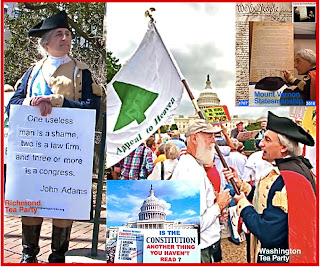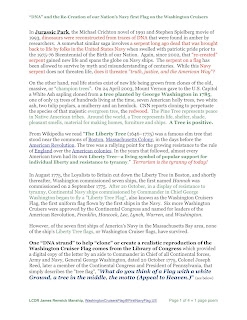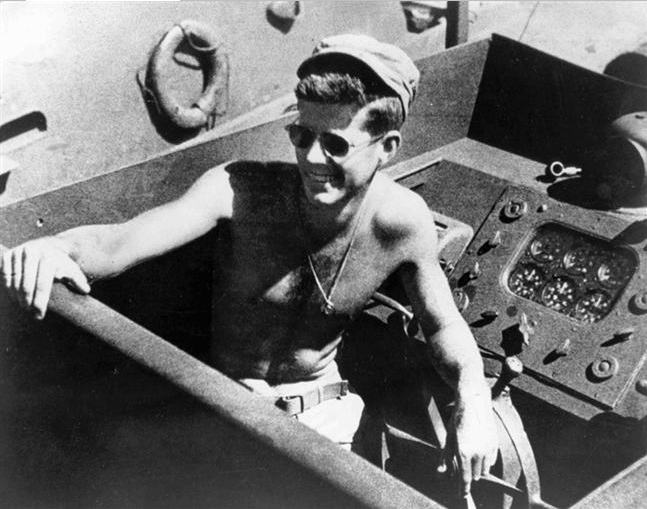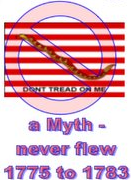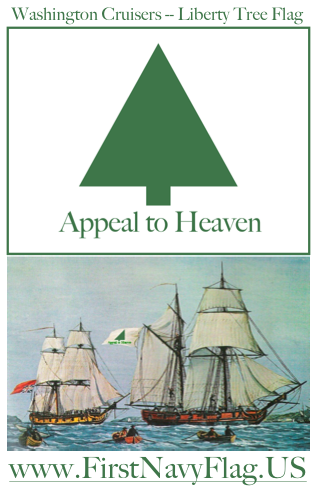Saturday, October 04, 2025
Washington FirstNavyFlag in US Capitol Rotunda
Posted by
"George Washington" 'States'Manship
at
Saturday, October 04, 2025
0
comments
![]()
![]()
Friday, October 03, 2025
Appeal to Heaven Liberty Tree Flag book gives True History of 1775 FIRST NAVY FLAG
Posted by
"George Washington" 'States'Manship
at
Friday, October 03, 2025
0
comments
![]()
![]()
"Seed of Truth" on 250th Navy Birthday and its FIRST NAVY FLAG of 1775 "Appeal to Heaven" Liberty Tree Flag
Posted by
"George Washington" 'States'Manship
at
Friday, October 03, 2025
0
comments
![]()
![]()
Tuesday, January 27, 2015
Posted by
"George Washington" 'States'Manship
at
Tuesday, January 27, 2015
0
comments
![]()
![]()
Revival in America of the "Appeal to Heaven" Liberty Tree Flag, Images and photos...


The Spirit of George Washington LIVES! prays for America at Giant Center in Hershey, Pennsylvania in August A.D. 2014.
Posted by
"George Washington" 'States'Manship
at
Tuesday, January 27, 2015
0
comments
![]()
![]()
Posted by
"George Washington" 'States'Manship
at
Tuesday, January 27, 2015
0
comments
![]()
![]()
Thursday, March 11, 2010
Attempted to place as new masthead for this site, twice failed to post, ACCOMPLISHED 5 years LATER...
Posted by
"George Washington" 'States'Manship
at
Thursday, March 11, 2010
1 comments
![]()
![]()
Friday, November 06, 2009
Liberty Tree at Tea Party Rally in Washington on Fox News Sean Hannity @ 1:58 in 5:06 YouTube video
Posted by
"George Washington" 'States'Manship
at
Friday, November 06, 2009
0
comments
![]()
![]()
Thursday, November 05, 2009
Liberty Tree at Tea Party Rally in Washington, US Capitol in background
Posted by
"George Washington" 'States'Manship
at
Thursday, November 05, 2009
0
comments
![]()
![]()
Friday, July 04, 2008
First Navy Flag "pattern" and "DNA" bits of History supporting replica design or "Re-Creation"
Posted by
"George Washington" 'States'Manship
at
Friday, July 04, 2008
1 comments
![]()
![]()
Liberty Tree Flag in 4th of July Parade in Washington, DC & many others
In 2008 Independence Day Parade is the first time the First Navy Flag, Liberty Tree Flag (re-created) flew as its bearer marched in the parade. A few weeks later the Washington Cruiser Flag flew in front of the Statue of Washington in the U.S. Capitol Rotunda...
It flew again in the Labor Day Parade in Buena Vista, Virginia, the Governor Jefferson Thanksgiving Parade in Charlottesville (the Saturday before Thanksgiving), the Macy's Thanksgiving Day Parade in New York City, and later at the Federal Building on Wall Street.
Later that year after Christmas, the flag traveled to the Birthplace of the American Navy to Marblehead, Massachusett where it "flew" in front of the original "Spirit of '76" painting.
The Washington Cruisers "Appeal to Heaven" Flag also flew on the pier in front of the USS Constitution, in front of the Massachusetts Capitol on Beacon Hill in Boston, and in Trinity Church, Newport, Rhode Island where General Washington attended prayer services when in Newport, a few blocks from Washington Square.
Posted by
"George Washington" 'States'Manship
at
Friday, July 04, 2008
0
comments
![]()
![]()
Saturday, February 09, 2008
8Feb2008Ltr_PresidentBush
Posted by
"George Washington" 'States'Manship
at
Saturday, February 09, 2008
0
comments
![]()
![]()
"Fake Snake" current Navy Jack flag - myth exposed!
Posted by
"George Washington" 'States'Manship
at
Saturday, February 09, 2008
0
comments
![]()
![]()
1stNavyFlag_TwoBitsDNA
Posted by
"George Washington" 'States'Manship
at
Saturday, February 09, 2008
0
comments
![]()
![]()
RebelsUnderSail
Posted by
"George Washington" 'States'Manship
at
Saturday, February 09, 2008
0
comments
![]()
![]()
1stNavyFlagDNAp1
Posted by
"George Washington" 'States'Manship
at
Saturday, February 09, 2008
0
comments
![]()
![]()
1stNavyFlagDNAp2
Posted by
"George Washington" 'States'Manship
at
Saturday, February 09, 2008
0
comments
![]()
![]()
1stNavyFlagDNAp3
Posted by
"George Washington" 'States'Manship
at
Saturday, February 09, 2008
0
comments
![]()
![]()
1stNavyFlagDNAp4
Posted by
"George Washington" 'States'Manship
at
Saturday, February 09, 2008
0
comments
![]()
![]()
1stNavyFlagDNAp5 Paine Poem - LIBERTY TREE
Posted by
"George Washington" 'States'Manship
at
Saturday, February 09, 2008
0
comments
![]()
![]()
NHF_LoC_Laube_FirstNavyFlag
Posted by
"George Washington" 'States'Manship
at
Saturday, February 09, 2008
0
comments
![]()
![]()
8Feb2008Ltr_Bill_Middendorf
Posted by
"George Washington" 'States'Manship
at
Saturday, February 09, 2008
0
comments
![]()
![]()
8Feb2008Ltr_Amb_Middendorf
Posted by
"George Washington" 'States'Manship
at
Saturday, February 09, 2008
0
comments
![]()
![]()
4Feb2008Ltr_AmbMiddendorf
Posted by
"George Washington" 'States'Manship
at
Saturday, February 09, 2008
0
comments
![]()
![]()
6Jan2006Ltr_SECNAV_Winter
Posted by
"George Washington" 'States'Manship
at
Saturday, February 09, 2008
0
comments
![]()
![]()
18Jan2008Ltr_FirstLadyB
Posted by
"George Washington" 'States'Manship
at
Saturday, February 09, 2008
0
comments
![]()
![]()
18Jan2008Ltr_FirstLady_GWinClassrooms
Posted by
"George Washington" 'States'Manship
at
Saturday, February 09, 2008
0
comments
![]()
![]()
Saturday, February 02, 2008
Updated America-England descriptions of First Navy Flag
Posted by
"George Washington" 'States'Manship
at
Saturday, February 02, 2008
0
comments
![]()
![]()
Naval Historical Foundation book "The NAVY" shows first ship Hannah with Liberty Tree Flag
Posted by
"George Washington" 'States'Manship
at
Saturday, February 02, 2008
0
comments
![]()
![]()
12th Revision, (maybe "Final") of "DNA and re-creation of First Navy Flag" article
Dear Gary,
I have made a few additions, including your black and white diagram of the Connecticut 5th Regiment "Pine Tree" flag from the Flag Bulletin #206.
Put it on the right side of the quote from your other article with David Martucci, yet had to reduce the font size to make everything fit.
Also added to images of paintings of the first Continental Navy ship, Hannah, and another of the Washington Cruisers, the Continental Navy ship Lee.
The Continental Navy ship Lee picture was mailed to me by an aide to the former Secretary of the Navy Gordon England about the time he was named Deputy Secretary of Defense.
The first Navy ship Hannah picture is from the big "coffee table" book "The NAVY" published by the Naval Historical Foundation.
I learned from reading James Fenimore Cooper's History of the Navy that a "Providence packet" ship named "Hannah" eluding the British ship Gaspe' was able to cause the British ship with a deeper draft to run aground on a sand bar the Hannah knew about and was able to sail over due to its more shallow draft. Really clever!
Later the marooned Gaspe' exploded, presumably by other Patriot attacks, so that was an early Navy "victory" for the Americans.
That probably happened pretty close to where you live. Do you know of that Hannah-Gaspe' "battle"?
I am very curious if that "Hannah" might by some stroke of good fortune also be the Hannah of Colonel John Glover, that became America's first ship commissioned in the Continental Navy according to the big "coffee table" book "The NAVY" published by the Naval Historical Foundation.
Both ships were from or commissioned in Marblehead, so I believe the Continental ship Lee was most likely named for Jeremiah Lee of Marblehead who died on 10 May 1775 from injuries sustained on 19 April, the same day as the Battle of Lexington and Concord when the
British also tried to capture Jeremiah Lee, John Hancock and Samuel Adams, who were the organizers of the "Rebels", or chief rabble rousers.
Those "Marvelous Men of Marblehead" were key to the survival of our Continental Army at Brooklyn Heights at the other end of Long Island from you, the "Dunkirk" of the Revolution, and were critical to the successful "Washington Crossing", the Inchon Landing of the
Revolution, if not the comparisons "Brooklyn-Dunkirk" and "Trenton- Inchon" should be reversed giving primacy to the Revolution battles over the later battles.
And I would be willing to bet that mostly Marblehead men made up the 200 men that Commander in Chief General George Washington loaned to former Rhode Island Militia Artillery General Esek Hopkins to man his fleet of Continental Navy ships also commissioned by the Continental Congress when Hopkins was named by Congress as the Navy Commander in Chief, and was called by the sailors "Commodore".
After Congress relieved Hopkins as Commander in Chief, I believe that John Adams tried to have Captain John Manley named as the Navy Commodore. Captain Manley was the skipper of the Continental ship Lee, one of the Washington Cruisers, or "Northern Fleet" of the
Continental Navy, that was very successful in capturing British supply ships like shown in the painting.
One of the most sad side-bar stories of American Navy History in the Revolution is that the British supply ship Lively was captured with 30,000 pairs of shoes and all sorts of other clothing in November 1776, yet due to bickering of the commission to be paid for the
capture the cargo was not released and sent to Washington's Army and on 25 December 1776, four soldiers on the March to Trenton who had no shoes died from exposure.
With the new month infusion of funds, I purchased a Pixel image editing program to enhance the image of the flag on the pictures of the ships to some semblance of the DNA-recreated Washington Cruiser Flag, and so indicate so no one questions that we have KGB type secretive photo manipulation. Up front and honest, tell it like it is, best as the facts of History provide.
The painters at that time did not have the benefit of your Colonial era flag, nor access to the letter of Washington's aide, Colonel Joseph Reed kept at the Library of Congress, nor the letter of the British Admiral Sir Hugh Palliser, kept at the British National Maritime Museum in Greenwich, England.
Those enhanced ship images are set beside the large image of the bits of historical facts or "DNA" recreated Washington Cruiser Flag on page 3 and the Paine poem page 5.
Anyway, thanks ever so much for all your wise counsel and assistance in putting this article together.
For America's future (building up on our past),
James Renwick Manship
Interpreter of George Washington (in Three Dimensions)
Box 75, Mount Vernon, Virginia 22121
Washington@Statesmanship.US
202-657-6760
Quote from 1770, retired Virginia Militia Colonel
George Washington said:
"As our country grows, and its population increases, as it will,
care must be taken to have each succeeding generation know
the trials and tribulations of those who preceded them.
History is an essential study to better government."
And America's Educator, Noah Webster, wrote in a.d. 1828:
"Literary power and statesmanship were combined in George
Washington, ..."
Posted by
"George Washington" 'States'Manship
at
Saturday, February 02, 2008
0
comments
![]()
![]()
Friday, February 01, 2008
The ONLY surviving "Tree Flag" from the early days of America
In 1993, in Southold, Long Island, New York, History enthusiast Gary Laube bought an old trunk in which he found balled up in the bottom some fabric. Soon Mr. Laube found this old military flag within. He lovingly unwrapped this flag and was amazed to discover the only flag from the Revolution. the French and Indian War periods, and before, with a "Tree" in the design that has survived the centuries of time. In 2002, The New York Times wrote, "Rabbit Goody, a textile historian in Cherry Valley, N.Y., also studied the flag and found the woolen fabric and three ply hand-spun sewing thread consistent with Long Island textile production of the late 1600's.
In 2002, The New York Times wrote, "Rabbit Goody, a textile historian in Cherry Valley, N.Y., also studied the flag and found the woolen fabric and three ply hand-spun sewing thread consistent with Long Island textile production of the late 1600's.
"I'm convinced the Pine Tree flag is the oldest surviving Colonial flag. I've seen the other four, and Mr. Laube's is older. There are flags in England that were used in the American colonies, but they are later."
(Click on the photos to go to the websites of these two great patriots!)
This Southold Pine Tree flag provides two critical design elements not elsewhere seen, one the simple triangle shape tree, (rather than the elaborate, many-branched trees created by modern graphic artists)...
...and the other in the middle of the flag (hard to see in this photograph) is the inscription, 5th Regt. The upper and lower case of the font used in the inscription is a "clue" or "DNA strand" used to create a realistic reproduction of the design of the Washington Cruisers flag, the first flag flown on America's Navy ships.
The design was described in a letter dated 20 October 1775 by Colonel Joseph Reed, the Aide to General George Washington, Commander in Chief of the Continental forces, Army AND Navy, months before Rhode Island Militia Artillery General Esek Hopkins, brother of Stephen Hopkins of the Maritime Committee of the Continental Congress, was named as Commodore of the Continental Navy in December 1775.
Washington's aide Colonel Reed wrote: "What do you think of a Flag with a white Ground, a tree in the middle, the motto (Appeal to Heaven.)"
See the Colonel Reed letter to Colonel Glover at the Library of Congress Digital Archives:
http://memory.loc.gov/mss/mgw/mgw3b/001/085084.jpg
Commodore Hopkins "borrowed" some 200 soldier-sailors from General Washington's Army to first man his additional Navy ships beyond the first seven ships that were commissioned by General Washington with the consent of the Continental Congress and named for leaders of the "Fair Tax and Representation" efforts before it became a full "Revolution" months later. The "Washington Cruisers" were the Franklin, Hancock, Lee, Lynch, Warren and Washington.
Posted by
"George Washington" 'States'Manship
at
Friday, February 01, 2008
0
comments
![]()
![]()
Labels: Colonel Joseph Reed, First Navy Flag, George Washington, Hopkins, Southold flag, Washington Cruisers Flag
Saturday, December 22, 2007
Not exactly - 22 Dec: This Day in History 1775: Continental Congress creates a Continental Navy
Actually, not exactly...on 2 September 1775, Commander in Chief Washington commissioned the first Continental Navy ship "Hannah" (named for the wife of Colonel John Glover who owned the ship), and six others later, named by his very politically astute staff for leaders of the Revolution (Franklin, Hancock, Harrison, Lee, Lynch, Warren, and Washington).
The Navy ship Lee may have been named not for a famous Virginian, but for Col. Jeremiah Lee who "was one of the most successful and affluent men in America before the Revolution. A leading merchant in Marblehead, Massachusetts, he owned one of the largest fleets of vessels in Britain’s North American colonies. A 1771 tax listing indicates that he was the wealthiest man in Massachusetts." Jeremiah Lee died in 1775 as a secret organizer with Samuel Adams and John Hancock in equipping the Continental Forces. "His death at age 54 -- shortly after the conflict began -- was a direct result of his involvement in clandestine events in Lexington, in April, 1775." per...http://www.marbleheadmuseum.org/Whois_Lee.htm)
The Navy itself counts 13 October as its birthday because on that day the Maritime Committee of the Continental Congress which had been debating whether or not to create an American Navy and risk the wrath of the British, received a letter from Commander in Chief Washington dated 5 October asking what the Congress advised he should do with a captured British ship.
That capture of a British ship by one of the "Washington Cruisers" made moot the debate of whether or not to create a Navy for fear of risking the wrath of the British, so Congress ordered more ships to be commissioned, thereby affirming the prior birth of the Navy by Commander in Chief of all Continental Forces, George Washington. Washington recognized that he could not complete a siege of the British Army in the port town of Boston without at least a small Navy.
Esek Hopkins, named this 22nd day of December as first Commodore of the Continental Navy, was previously an Artillery General in the Rhode Island Militia, a ship owner, and brother of Stephen Hopkins who was a member of the Maritime Committee of the Continental Congress. A couple of months before, General Hopkins, or the Rhode Island Governor, had declined to provide some artillery cannon to Washington's agent for the outfitting of the first ships of the Continental Navy commissioned by Washington.
There is some indication that Washington did not have the highest regard for Commodore Hopkins, and as the article indicates, Hopkins was later relieved of his command by the Continental Congress.
There is a letter at University of Virginia George Washington Papers project from Commander-in-Chief Washington to Commodore Hopkins asking him to return the 200 soldiers that Washington lent to Hopkins to man the ships under his command. Very likely many of the men were soldiers from Colonel John Glover's "Marblehead Men", the 14th Continental Regiment of sailors from Marblehead, Massachusetts who enlisted in the Continental Army. Those Marblehead Men, sailors become soldiers, were the men who manned the boats for the "miracle" evacuation of the American Army at Brooklyn Heights on 29-30 August a.d. 1776, and handled the boats crossing the Delaware on the Christmas night Raid on Trenton also in a.d. 1776 that kept the Light of Liberty alive! -- and the true first Navy flag was the evergreen Tree of Liberty that flew on ships that sailed from ports near the homes of these Marblehead Men!

1775: Continental Congress creates a Continental Navy
December 22, 1775
Continental Congress creates a Continental Navy
On Friday, December 22, 1775, the Continental Congress creates a Continental Navy, naming Esek Hopkins, Esq., as commander in chief of the fleet.Congress also named four captains to the new service: Dudley Saltonstall, Abraham Whipple, Nicholas Biddle and John Burrows Hopkins. Their respective vessels, the Alfred, Columbus, Andrew Doria and Cabot, became the first ships of the Navy's fleet. Five first lieutenants, including future American hero John Paul Jones, five second lieutenants, and three third lieutenants also received their commissions.
The new Admiral Hopkins, as he was dubbed by George Washington, was a Rhode Islander of some standing. His brother was Stephen Hopkins, the state's governor. Esek Hopkins had married well and used his wife's fortune to buy a ship. It proved a wise investment. He added to his wealth working as a privateer during the Seven Years' War. In his new position, Congress promised to pay him "125 dollars per calendar month"; they also informed that he could look forward to some "share of the prizes allotted to the captors." Christopher Gadsden of South Carolina designed Hopkins' personal standard, which flew from the first navy fleet. The yellow flag bore the image of a coiled snake and the Patriot motto, "Don't Tread on Me."
Hopkins' first assignment was to assess the feasibility of an attack on British naval forces in the Chesapeake Bay. After sailing south with his meager force of eight ships, Hopkins decided that victory in such an encounter was impossible. He sailed to the Bahamas instead, where he attacked the British port of Nassau, a decision for which he was relieved of his command upon returning to the continent.
Posted by
"George Washington" 'States'Manship
at
Saturday, December 22, 2007
0
comments
![]()
![]()
Labels: Congress, First Navy Flag, Washington Cruisers Flag
Tuesday, December 18, 2007
True Tree, simple shape, (snake still fake!)
Back on 2 September this year, I sent an email to Peter Ansoff, president or past president of NAVA - North American Vexillogical Association - the association of flag experts to "celebrate" the anniversary of the First Navy Flag flying on the "Hannah", the first Navy ship commissioned during the War for Independence.
Expert that he is, Mr. Ansoff suggested that probably the "Hannah" and others of the seven Washington Cruisers (Franklin, Hancock, Harrison, Lee, Lynch, Warren, and Washington) did not fly the Tree flag until after the aide to the Commander in Chief of all Continental Forces -- that means the Army AND the Navy -- Colonel Joseph Reed, sent his famous letter of 20 October a.d. 1775 describing the design for the flag to fly on the first Navy ships. Otherwise, why would Colonel Reed have written his letter? Makes good sense. 
Washington's aide Colonel Reed wrote: "What do you think of a Flag with a white Ground, a tree in the middle, the motto (Appeal to Heaven.)"
See the Colonel Reed letter to Colonel Glover at the Library of Congress Digital Archives:
http://memory.loc.gov/mss/mgw/mgw3b/001/085084.jpg
That Tree flag suggested by Colonel Reed on 20 October a.d 1775 came shortly after the Loyalists in Boston in mid-August cut down the Liberty Tree where where Sons of Liberty would rally, so this first Navy flag, with its motto "Appeal to Heaven" served as a defiant Liberty Tree flag. With the motto, it is a different flag and before the "Pine Tree Flag" of the Massachusetts Navy the state legislature voted on in a.d. 1776, yet carries on the American tradition of over a century of a tree representing "sturdy manhood".
(See the 19 November entry on this blog for the profound patriotic meaning from a Resolution passed by the Provincial Congress of Massachusetts.)
The Cruisers commissioned by Commander in Chief Washington with the blessing of the Continental Congress, and named for many of its leaders, were part of the necessary strategy of encirclement, or seige, with interdiction of supply ships heading for the British in the port town of Boston. Those continuing raids on supply ships, combined with the cannons from Ticonderoga placed atop Dorchester Heights where they could fire on the British positions, and the outbreak of smallpox, combined to force the British to evacuate Boston in March a.d. 1776, a "victory" for the combined Continental forces of Washington's Army and Navy.
[Contrary to current Navy claims, the first Navy Jack was NOT the Urban Legend, Historical Myth, "fake snake" flag showing a snake on its belly about to be trampled crawling upon over the Sons of Liberty flag of red and white stripes, with the plaintive plea (Please...) "Don't Tread on Me!".]
Despite efforts of Naval Historian Admiral George Henry Preble (1816-1885) from 1872 to 1880, and the efforts of Naval Historian Admiral Samuel Eliot Morison (1887-1976) to discredit the Snake Over Stripes Navy Jack flag as valid, this reporter was told by employees of the Naval Historical Center that in the mid-1970s some Navy staff officers in the Pentagon saw a color picture of the fake snake flag in a Webster's Dictionary, with every good intent saw it as a dynamic and defiant image, and so ordered thousands and thousands from flag manufacturers to serve as the Navy's symbol for Bicentennial celebrations beginning in a.d. 1975. Thereby, this "urban legend" fake snake flag gained new life. While dynamic, the fake snake image is deceptive and so totally wrong to be flying on our Navy ships.
Only AFTER the flags were ordered, did the Navy staff officers in the Pentagon ask the Naval Historical Center historians at the Washington Navy Yard about the history of the flag. Even then the veracity, or truth, of the fake snake Navy flag was in considerable doubt, yet in 2004, the article in the flag journal Raven by flag expert Peter Ansoff raises the doubt level of the fake snake "first Navy Jack" flag to near 100 per cent. In a.d. 1975, or even in a.d. 2001 when use of the fake Snake flag was resumed for the Global War on Terrorism, it might have been reasonable to consider the fake snake flag may have been legitimate, but after a.d. 2004, there is no longer any good scholarship to sustain the continuing error of the United States Navy.
And yet, sadly, despite the truth now being known in the Navy Pentagon offices, that fake snake false flag still flies on the bows of America's proud Navy ships. So, it is time for We the People to ask our elected servants to direct the Navy serve the Truth, and remove the Fake Snake false "first Navy Jack" flag from our ships, and either replace it with the former blue field of stars canton of the United States "Stars and Stripes" flag, or replace it with the true First Navy Flag, also known as the Washington Cruisers flag, the evergreen Tree of Liberty flag, where Thomas Paine, author of "Common Sense", named Washington "the World's Apostle of Liberty", so how much more fitting would it be on this 208th Anniversary of the Burial of George Washington (18 December) that the Tree of Liberty flag of America's Washington begin to be requested to fly on our ships all around the world?
Yet Washington's Aide Colonel Reed did not describe the shape of the tree.
Below are a few of the shapes of the "tree" by others interpretations that I have found here, hither and yon.
Given that variety, I also asked flag expert Peter Ansoff what did he believe was the shape of the tree described by Colonel Reed's letter. Mr. Ansoff suggested a simple triangle based on the Southhold flag, believed to be the only existing flag of the period with a tree in its design. Mr. Ansoff referred me to the Flag Bulletin #206...
In late October, I called Dr. Whitney Smith of the Flag Research Center in Worchester, Massachusetts, paid to join his worthy flag educational Center, ordered a copy of Flag Bulletin #206 that I received in the mail along with some others a couple of weeks later.
Visit that educational site at: http://www.flagresearchcenter.com/
Even here on the front cover, is yet another shape of the undefined shape of the "Tree" described by Reed.
And the centerfold of The Flag Bulletin has another shape for the evergreen tree...
Yet the black and white photograph in the article of the one existing "tree" flag from the period shows a much more simple shape, a simple triangle to represent the tree.
From that photograph of an original "tree" flag, an artist did a "reconstruction" drawing of the "tree" flag from Southhold, on Long Island, in New York. That is shown below.
Based on the photograph and the reconstructed drawing of the "tree" flag of Southhold, New York, I have become pretty well convinced that all the elaborate many branches tree designs are not realistic.
Consider. You are a flag maker 222 years ago. You have to hand-stitch the "tree" onto the flag. A simple triangle is VERY MUCH MORE easy to stitch on the flag than these other designs of people like me working on a computer screen.
A simple triangle shaped tree would take less time, less thread, and be far more likely to withstand the stress of the flag flapping in the winds.
So my "VOTE" for the final design of:
the First Navy Flag,
the Liberty Tree Flag, or also known as
the Washington Cruisers Flag is the simple triangle tree.
How about you? Please CLICK on the comments word below to VOTE and COMMENT...
And... Merry Christmas!
Reed was the first to identify problems with Benedict Arnold when while recuperating from war wounds Arnold was assigned as the military commandant of Philadelphia, while Reed was both President of Pennsylvania, and a member of the Continental Congress in Philadelphia. "With people in Congress eyeing everything he did, he was soon brought up on charges and was court-martialed. He defended himself, furiously as always, but he was found guilty on two charges: using government wagons for his personal use and issuing a pass to a ship he later invested in. Washington, himself pronounced the charges "imprudent and improper" and "peculiarly reprehensible."
This was the beginning of the end of the good days of General Arnold, once a Son of Liberty, now a "Snake in the Grass", akin to the Fake Snake Flag, a Snake crawling over the Sons of Liberty flag. Read more on the Benedict Arnold court-martial in Philadelphia BEFORE the Benedict Arnold treason at West Point:
http://www.ushistory.org/valleyforge/served/arnold.html
CLICK to read this ONE PAGE SUMMARY of a 52 page article by Peter Ansoff in Raven, the flag expert journal on why the "Don't Tread On Me" so-called Navy Jack is truly a "Fake Snake" flag.
Posted by
"George Washington" 'States'Manship
at
Tuesday, December 18, 2007
1 comments
![]()
![]()
Labels: First Navy Flag, Liberty Tree Flag, Washington Cruisers Flag
Monday, November 26, 2007
First Lady Letter on First Navy "True Tree" Flag
The letter below to the First Lady about the First Navy Flag, the "True Tree Flag" is dated 26 November, and comes days after the First Husband, "President George W." spoke the True Story of the First Thanksgiving in America, in a.d. 1619, along the James River in Virginia, not as most Americans have been taught in school, in Massachusetts.
Though then Massachusetts was part of the Virginia Colony, the second named settlement in the Virginia Charter of a.d. 1606 signed by King James I, that set the stage for the settlement of Jamestowne the next year, a.d. 1607, only many years later was "Plimouth" settled in a.d. 1620.
Posted by
"George Washington" 'States'Manship
at
Monday, November 26, 2007
0
comments
![]()
![]()
Labels: First Lady, First Navy Flag, Laura Bush, Liberty Tree Flag












